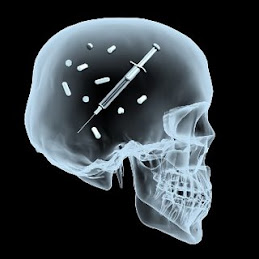

Save Money and Protect Your Healthy for Active Life....... Controversy Compared to fresh milk, powdered milk (and powdered eggs) are stated to be exceptionally high in oxysterols (oxidized cholesterol). The free radicals have been stated to have atherogenic ("causing atherosclerosis") and carcinogenic ("causing cancer") properties. Powdered milk is frequently added to 1-2% pasteurized milk to give it more body.
Milk Powder should stop. Otherwise answer bellow Q.
1. Study why parents frequently go to doctor with kids for cough and Allergic conditions.
2. Why kids having Diabetes about 20% of Kids bellow age 14 ?
3. Study reason for 20,140,000 teeth problems age up to year 14
4. Why people having Diabetes up to 1/4 among total population of the country ? (around 50,00,000 )
5. Why all most all Elders having Arthritis ? ? (40 Malians from USA)
6. Why people having Blood Pressure and Cancer ????
7. Study Latest treat due to MAD COW DISEASE. Do you want to be Alzheimer's friend??
8. Study why people having Kidney failure problems?
Mad Cow Disease or bovine spongiform encephalopathy (BSE) is a brain disease of cattle first identified in the United Kingdom (UK) in the mid 1980s. BSE is part of a group of diseases known as transmissible spongiform encephalopathies (TSEs). All of these diseases are characterized by distinctive changes in the brain, abnormal behavior and death.
What causes Mad Cow Disease (BSE)?
It is thought that this disease is caused and spread by an abnormal form of a protein called a "prion". The abnormal protein triggers a chain-reaction causing other proteins in the brain to change to the abnormal form. Eventually these abnormal proteins accumulate in the brain leading to the development of abnormal behavior and eventually death.
How do cattle get Mad Cow Disease (BSE)?
When cattle are slaughtered, portions of the animal not destined for human consumption may be used to produce a protein-rich byproduct that may be mixed with grain and fed back to livestock as feed. In the UK where the disease was first identified, it is thought that these byproducts may have contained the prion protein, and that cattle became infected by consuming feed containing prion-contaminated animal protein. It is for this reason that the feeding of animal proteins derived from cattle back to cattle has been banned in the US.
Chronic wasting disease (CWD) of deer and elk (cervids) is another TSE disease that has occurred in wild cervids in the Rocky Mountain states for many years and has recently been identified in Wisconsin. There are also TSEs in minks, cats and other animals.
Yes. There are a number of TSE diseases which occur in humans. One of the human diseases in this group is classic Creutzfeldt-Jakob disease (CJD). In the classic form of CJD, a chance (sporadic) mutation of normal brain protein into an abnormal protein occurs, which then leads to the formation of more abnormal protein.
CJD-like illness can also be familial, occurring in families where a genetic mutation favors the initial development of the abnormal protein. Also, there are cases of CJD that have followed transplantation of prion-infected cornea (eye) and other tissues, or the administration of hormones produced from human glands. More recently variant CJD (vCJD) has been identified. Variant CJD is a TSE disease in humans linked to eating meat products from cattle infected with Mad Cow Disease (BSE).
What are the symptoms of Creutzfeldt-Jacob Disease (CJD)?
Classic CJD is a human disease characterized by progressive dementia, leading to death. The disease may start with confusion or mental symptoms. Other symptoms are difficulty moving and muscle jerks. More and more signs and symptoms of brain damage and movement disorder follow until the patient goes into a coma and dies. Most of the cases of classic CJD have been diagnosed in people between the ages of 55 and 75.
How long does it take to develop classic CJD?
Evidence suggests that it might take between 10 to 40 years to get sick with classic CJD once abnormal proteins have begun to develop. Classic CJD almost always occurs in people over 50 years old. Once someone gets classic CJD, they may live for 6 to 12 months.
How common is classic CJD?
Because classic CJD is caused by the chance, sporadic mutation of a normal brain protein into the prion, the risk of classic CJD is the same all over the world, about one per million persons per year. Studies conducted by the Department of Public Health have identified that 5-10 cases of classic CJD occurred in Massachusetts’s residents each year between 1992 and 2000.
What is variant-CJD (vCJD)?
Variant CJD is a disease in humans that has been linked to ingesting meat infected with the prion that causes mad cow disease (BSE). Variant CJD tends to occur in younger people (average age 29 rather than 65 for classic CJD) and has slightly different symptoms than classic CJD. People with vCJD tend to live slightly longer than people with classic CJD.
Variant CJD was first recognized in the UK in the mid-1990s, over ten years after the beginning of the BSE outbreak in cattle. Because of this and other similarities, vCJD is believed to be the result of consumption of prion-contaminated meat products. Muscle meat itself does not contain prions, but in processing of ground beef, sausage and other meat products, contamination of the product with nervous tissues containing the infective prion may occur.
How common is vCJD, the human disease related to ingesting meat products infected with Mad Cow Disease (BSE)?
The risk of vCJD is thought to be related to exposure to animal products contaminated with the prion that causes BSE in cattle. Nearly all the cases of vCJD in humans have been in the UK or have been in people with exposure to cattle meat products from the UK.
There have been 153 cases of vCJD reported in the world since the first case was identified in 1995, with 143 of these in the UK. Although many millions of people in the UK and around the world have been exposed to UK beef, and approximately 200,000 cases of BSE in cattle were reported and removed from the food supply over the past twenty years, the number of cases of vCJD remains low.
How do people get vCJD?
It is thought that a very small percentage of people who eat meat products infected with the BSE agent will get vCJD. Experiments done with cattle and other animals suggest that almost all of the infectivity is in tissue from the cattle’s brain, spinal cord, and intestine, and that muscle meat itself is not infectious. Milk products from cattle are also not associated with any risk of infection with BSE.
How have BSE and vCJD been controlled in the United Kingdom?
After mad cow disease (BSE) was recognized, millions of cattle were killed and disposed of. The feeding of animal source protein back to cattle was banned. Because of these changes, the number of BSE cases in cattle each year in the UK has been decreasing since 1992. The number of vCJD cases in humans each year in the UK has been decreasing since 2000.
Statistics on mad cow disease (BSE) in cattle are available at: http://www.oie.int/eng/info/en_esb.htm.
Statistics on vCJD in the UK, the human disease thought related to eating meat contaminated with brain or spinal tissue of cows infected with BSE, are available at: http://www.cjd.ed.ac.uk/figures.htm.
What is being done in the United States to prevent BSE and vCJD?
The United States introduced a number of safeguards and surveillance efforts to lower the chances of BSE getting into the U.S. These included bans on use of certain animal proteins in animal feed, bans on UK beef products, and testing programs to quickly identify BSE in US cattle. The US plan can be obtained at: http://www.aphis.usda.gov/lpa/issues/bse/bsesum.pdf. Over 57,000 cattle brains have been tested for BSE in the United States.
The first cow positive for BSE in the United States was found in December 2003 in Washington State. This animal was imported from Canada. Because the cow was born in Canada before it was illegal to feed animal protein back to cattle, the cow may have been exposed to the prion agent through eating contaminated animal feed.
What has been done in Massachusetts?
State agencies, particularly the Massachusetts Department of Agricultural Resources (MDAR), work closely with the U.S. Department of Agriculture and federal health agencies to assure the safety of the food supply. Bans on imports of beef and cattle from countries with BSE positive cows have been in place for some time. Bans on imports of deer have been also in place because of BSE-like disease in deer and elk, called chronic wasting disease (CWD).
The Massachusetts Department of Public Health has been monitoring all CJD cases in Massachusetts since 1992. This surveillance includes intensified follow-up of any cases in people under 50 years old. Thus far, we have seen cases of CJD as expected (approximately one per million per year), with no evidence of vCJD. Massachusetts is one of a few states where CJD is a reportable condition.
Where can I get more information?
The following web sites can provide a great deal of more information on BSE, CJD, vCJD and related diseases:

Misconceptions:
by D. P. Atukorale
If you didn't have bones you would just be a shapeless blob on the floor. You might have learned about human skeleton from the popular song "that the ankle bone is connected to knee bone..." etc you might have been taught by your parents, teachers and doctors to drink milk to build strong bones and teeth.
You must have watched a lot of television advertisements (TV ads) and ads in newspapers and journals giving you all the beneficial effects of various brands of malted milk and (cow's) milk powder and how these various brands of malted milk and cow's milk containing varying amounts of calcium prevent osteoporosis.
Americans consume more cow's milk and its products than most populatations in the world. So Americans must have wonderful strong bones. Unfortunately this is not so. A recent study showed that American women aged 50 and older have one of the highest rates of hip fractures in the world.
The only countries with higher rates of hip fractures are in Europe and in South Pacific (
An excess rate of hip fractures often used as a reliable indicator of osteoporosis, a bone disease which especially affects women after menopause and this is claimed to be due to inadequate intake of calcium.
Dairy products are particularly rich in calcium, so that dairy industry eagerly supports efforts to boost calcium consumption. This is why you see so many TV ads about various brands of milk powder and malted milk. As mentioned earlier these countries that use the most cow's milk and its products also have the highest fracture rates and worst bone health.
One possible explanation is found in a report showing an impressively strong association between intake of animal protein and bone fracture rate for women in different countries.
Authored in 1993 by researchers at Yale University School of Medicine, the report summarized data on protein intake and fracture rates taken from 34 separate surveys in 16 countries that were published in 29 peer - reviewed publications. All the subjects in these surveys were women 50 years and older and it is noteworthy that 70 percent of the fracture rate was attributable to consumption of animal protein.
These researchers explained that animal protein unlike plant protein increased the acid load in the body. The body does not like this acidic environment and begins to fight it. In order to neutralize the acid, the body uses calcium which acts as a very effective base.
This calcium must come from somewhere and it ends up being pulled from bones and the calcium loss weakens the bone, putting them at greater risk for fracture.
There had been evidence for well over 100 years that animal protein decreases bone health. In 1880 it was first suggested that animal protein causes metabolic acid load and this was documented as long as 1920 and other studies showed that consumption of animal protein is more effective than plant protein at increasing metabolic acid load in the body.
When animal protein increases metabolic acid and draws calcium from bones, amount of calcium in urine is increased and average American intake of protein is 70-100g/day. The observation on the association between animal protein consumption and bone fracture rate is very impressive.
A study published in 2000, comes from the department of Medicine, at the
The study of Osteoporotic Research Group at
In rural
Do widely advertised claims that protein-rich dairy products protect our bones? Everyday we watch TV ads showing advantages of taking certain brands of milk powder containing calcium to get strong bones and to prevent osteoporosis.
It would be very interesting for one of our orthopaedic surgeons or a rheumatologist to compare the incidence of hip fractures among rural post menopausal women (who consume less animal proteins than the urban women) with urban post menopausal women who consume more animal proteins and takes calcium tablets regularly.
Prof. Mark Hegsted (long time Harvard Professor) believes that excessive high intake of calcium consumed over a long time impairs the body's ability to control how much calcium it uses and when.
Under healthy conditions the body uses an activated form of vitamin D, "calcitirol" to adjust how much calcium it absorbs from food and how much it excretes and distributes in the bones. Calcitriol is considered a hormone. It seems perfectly plausible that animal protein and even calcium when consumed at excessive levels are capable of increasing the risk of osteoporosis.
But dairy industry still suggests that we should consume more of its products and spends hundreds of thousands of rupees to advertise their products with a view to built strong bones and teeth. Huge amounts of money are at stake as well.
One of the most cited osteoporosis experts, one funded by dairy industry angrily wrote in a prominent editorial, that the diet favouring a diet with higher ratio of plant-to-animal protein cited above could have been influenced to some extent by 'currents' in the larger society (The currents he was referring were animal rights activitists opposed to the use of dairy foods).
BMD is a measure of bone density that is often used to diagnose bone health. If BMD falls below a certain level you may be at risk of osteoporosis i.e., if your BMD is low, you are at a risk for fracture.
Much better predictor of osteoporosis is dietary ratio of animal-to-plant protein the higher the ratio higher the risk of disease. BMD appears as it is associated with the ratio.
The researchers believe that the problem may be due to the effects of calcification and bone like formations in blood vessels Vit. D. enhances calcium absorption. Current dietary calcium and Vitamin D recommended for adult over 50 years of age are 1,200 mg and 400 to 600 i.u. respectively and recent findings suggest that these recommendations may be too high for general population.
The WHO acknowledges that less dietary calcium is needed when animal protein consumption is low.
Risk of osteoporosis
1) Stay physically active. Take the stairs instead of the lift; Brisk walking daily for about one hour or jogging, cycling or swimming or doing yoga are useful measurers.
2) Eat a variety of whole plants foods, avoid animal foods; calcium is available in plenty in plant foods such as "Niwithi", legumes such as beans and leafy vegetables. Stay away from refined carbohydrates like sugary cereals, candies, plain pastas and white breads.
3) Keep your salt intake to a minimum. Avoid highly processed and packaged foods which contain excess salt.
4) Don't be deceived by misleading TV ads about milk foods which the dairy industry claims to prevent osteoporosis.

Bovine spongiform encephalopathy (BSE), commonly known as mad-cow disease, is a fatal, neurodegenerative disease of cattle, which infects by a mechanism that surprised biologists upon its discovery in the late 20th century. In the UK, the country worst affected, 179,000 cattle were infected and 4.4 million killed as a precaution.
It is believed, but not proven, that the disease may be transmitted to human beings who eat infected carcasses. In humans, it is known as new variant Creutzfeldt-Jakob disease (vCJD or nvCJD), and by June 2007, it had killed 165 people in Britain, and six elsewhere with the number expected to rise because of the disease's long incubation period. Between 460,000 and 482,000 BSE-infected animals had entered the human food chain before controls on high-risk offal were introduced in 1989.
A British inquiry into BSE concluded that the epidemic was caused by feeding cattle, who are normally herbivores, the remains of other cattle in the form of meat and bone meal (MBM), which caused the infectious agent to spread. The origin of the disease itself remains unknown. The current scientific view is that infectious proteins called prions developed through spontaneous mutation, probably in the 1970s, and there is a possibility that the use of organophosphorus pesticides increased the susceptibility of cattle to the disease. The infectious agent is distinctive for the high temperatures it is able to survive; this contributed to the spread of the disease in Britain, which had reduced the temperatures used during its rendering process. Another contributory factor was the feeding of infected protein supplements to very young calves.

Pirith (Paritta) for Intelligent People
'Recent research in medicine, in experimental psychology and what is still called parapsychology has thrown some light on the nature of mind and its position in the world. During the last forty years the conviction has steadily grown among medical men that very many causes of diseases organic as well as functional, are directly caused by mental states. The body becomes ill because the mind controlling it either secretly wants to make it ill, or else because it is in such a state of agitation that it cannot prevent the body from sickening. Whatever its physical nature, resistance to disease is unquestionably correlated with the physiological condition of the patient.'
'Mind not only makes sick, it also cures. An optimistic patient has more chance of getting well than a patient who is worried and unhappy. The recorded instances of faith healing includes cases in which even organic diseases were cured almost instantaneously
It is believed that the vibratory sounds produced by the sonorous and mellifluous recital of the paritta suttas in their Pali verses are soothing to the nerves and induce peace and calm of mind; they also bring about harmony to the physical system.
How can bad influences springing from evil beings be counteracted by recital of paritta suttas? Bad influences are the results of evil thinking. They can, therefore, be counteracted by wholesome states of mind. One sure way of inducing a wholesome state of mind is by listening and reflecting on paritta recitals with intelligence and confidence. So great is the power of concentration that by adverting whole-heartedly to the truth contained in the paritta recitals one is able to develop a wholesome state of mind.
Kamma means action and not the result of action; therefore action can be counteracted by other action. Kamma is not something static, but is always changing, i.e., always in the making; that being so, action can be counteracted by other action. Hence bad actions on the part of the hearers of the recital may negative the beneficial effects of the recital.
If the mind of the hearer is contaminated with impure thoughts then also the intended beneficial effects of the recital may not materialize. But however impure the mind of the hearer may be if there is great confidence in the efficacy of the recital then this important factor may help to secure for him the beneficial effects of the recital.
DHAMMA: Buddhism is considered as a philosophy or a psychology, preached by The Buddha. There is a devotional aspect of Buddhism that is also of paramount importance to gain spiritual comfort or relief.
According to Buddha Dhamma, the mind is so closely linked with physical health. The soothing effect of listening to chanting of pirith and the beliefs in the protective nature of Pirith Desana is widely acclaimed in many Buddhist countries.
The selected discourses for recital are known as Paritta sutta in Pali. In Sanskrit it is called Parittrana and in Sinhala Pirith. Principally - they all mean protection.
"Results outcome due to exact Reason for that" : Lord Budda 2500 year before.
{ THIS ALL FOR PROFESSIONAL TO RE THINKING ABOUT OUR NATIONS }
Hey............ Milkpowder should stop. Yeap otherwise answer bellow Q.
WHY KIDS HAVING SO MUCH COUGH?
WHY KIDS HAVING DIABETES ABOUT 20% OF KIDS AROUND COUNTRY?
WHY 50,00,000 PEOPLE (1/4 OF POPULATION) HAVING DIABETES?
WHY MANY PEOPLE GO TO DOCTORS?
WHY PEOPLE BECOME ELDERS HAVING ARTHRITIS?
WHY PEOPLE SO MUCH HAVING CANCER AND BLOOD PRESSURE????
.jpg)





























Colombo |









